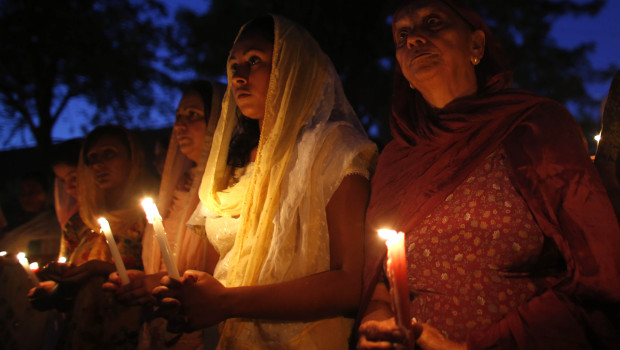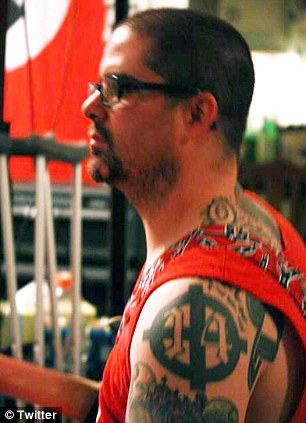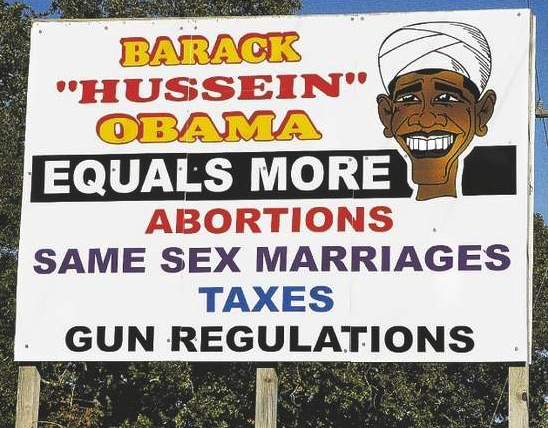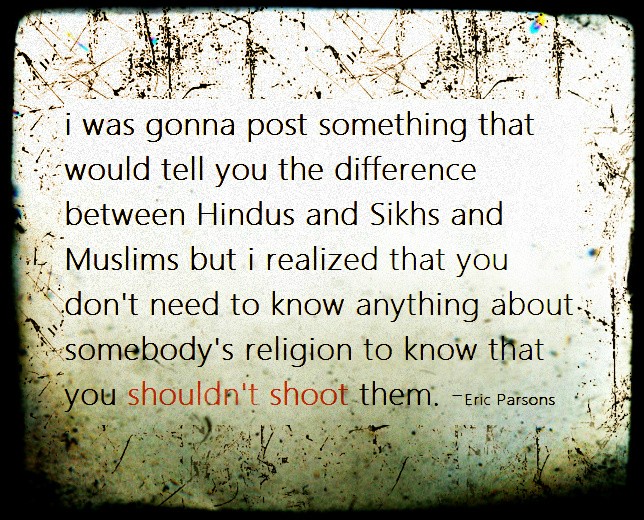
Yesterday, a man walked into a temple in Oak Creek, Wisconsin and opened fire with a legally-purchased automatic handgun. Ten minutes later, six members of the temple (including the temple’s president) were dead, several others were wounded (including a police first responder), and the shooter was killed after he refused to surrender to police officers.
The six victims were all Sikh (click here for details of each victim). The shooter was a White supremacist named Wade Michael Page.

I must be clear: at the moment, Page’s motives remain uncertain. We know that Page was an unremarkable man. He was an Army veteran who enlisted in 1992 and was honourably discharged in 1998 after repeated “patterns of misconduct” — a friend of Page’s explains that this was after multiple instances of showing up for formation intoxicated.
After being discharged, Page became a member of two skinhead music groups, one of which — “End Apathy” — he founded. Both groups released music popular on the hate website “Stormfront” through labels that sign creators of racist music catering to the skinhead movement. Page’s own head was shaved bald and his skin was decorated with neo-Nazi symbolism: a tattoo commemorating the victims of 9/11 was prominent enough on Page’s arm to be mentioned by survivors of the Oak Creek massacre to journalists. Earlier this morning, the Southern Poverty Law Center — a non-profit organization that tracks domestic hate and terrorist groups — noted that Page was in their database as a member of the most extremist racist hate movements in this country, but until now had never made any indication that he was capable of racial violence. Friends of Page describe how Page was a “loner” who seemed eager for a “racial holy war”. Indeed, the name of Page’s band — “End Apathy” — could be a reference to Page’s growing impatience with the neo-Nazi movement.
A few months back, I blogged about the Ku Klux Klan, and its efforts to “rebrand” its image. In short, the KKK is hoping to shake its image as a hate group; instead, it insists that it is a “fraternal organization” focused on “looking out for the interests of the white race”. With the dwindling public support for White supremacist ideology such as that espoused by the KKK (relative to, say, the Jim Crowe era), this new re-branding effort seems like a necessary — if incredulous — direction for organizations like the KKK.
But, one wonders whether this “re-branding effort” has disillusioned the movement’s core followers. And perhaps that, in conjunction with the hateful anti-establishment beliefs fostered by White supremacist movements, can culminate in a perfect storm of disenfranchised young neo-Nazis striking out on their own as “lone wolves”, to spark the racial wars that the neo-Nazi movement has until now preached as inevitable. In that light, one fears the worst: could Page be only the latest in a trend of neo-Nazis that are increasingly taking matters “into their own hands”. If this is true, the consequences may be devastating: after all, these are young people who have been exposed to underground — and even mainstream — racist hatred targeting everyone from Muslims to the president of the United States.

There are people who — if they decide to commit an act of mass murder — can (as demonstrated by both Page and James Holmes, the Aurora theatre shooter) purchase all their equipment legally. They can, in short, fail to commit a single crime until the first trigger-pull that results in the death of an innocent. These are their rights granted to them by this country’s interpretation of the Second Amendment.

Again, it’s hard to say what motivated Page’s shooting spree in Oak Creek yesterday. However, Page’s documented racial discontent and particular focus on 9/11 suggest that this was a man who focused his racial hatred on Muslims, or anyone he perceived as Muslim. In that context, Page’s heinous act may have been a case of deadly mistaken identity.
Sikhs — members of a religion practiced by millions of people originating predominantly from India — are distinguishable by the practice of covering their heads with a turban or a scarf; men of the Sikh faith also keep their facial hair uncut. Taken together, Sikhs bear a superficial resemblance to some Muslims, particularly to the untrained eye. However, Sikhs are no more related to Muslims because of their shared form of dress as Buddhists are related to Catholic priests, despite the fact that both wear long robes.
Since 9/11, the Sikh population in America — which number a mere ~700,000 — has been the target of numerous hate crimes, most committed by attackers who mistook them for Muslims. Reports ABC News:
In the first month after the 9/11 terrorist attacks, the coalition reports it logged more than 300 such acts around the country. But, Singh said, there are likely “thousands more” across the country that are never reported. The FBI does not track hate crimes against Sikhs. (Jenn’s note: The FBI lumps these crimes into the category “anti-Muslim”.)
“When you see a turban and a beard, the number one thing people think of is terrorism,” he said.
The first post-9/11 classified hate crime against a Sikh was the murder of Balbir Singh Sodhi in Mesa, Ariz. After the terrorist attacks, Frank Silva Roque, an aircraft mechanic, told bystanders at a local restaurant that he wanted to “shoot some rag heads,” according to an essay in the Huffington Post.
Recent hate attacks include death threats against a Virginia Sikh family in March 2012; a violent assault on a Sikh in New York City in May 2011; the murders of two elderly Sikhs in Elk Grove, California in March 2011; and the near drowning of a Sikh student in West Texas in December 2009.
It wouldn’t be a logical leap to imagine that Page was ignorant of — and probably apathetic to — the differences between Muslims and his Sikh victims. Indeed, how often have perpetrators of racial hate crimes taken a minute to verify the racial identities of their victims? Rarely. Vincent Chin’s murderers, after all, killed him because they thought he was Japanese. Hate doesn’t discriminate.
The true tragedy of the Oak Creek shooting, and the many anti-Sikh and anti-Muslim hate crimes that have been committed since 9/11, is the fact that the news has until now seemed almost reluctant to report any racialized trend by White supremacists to target both Muslims and people mistaken as Muslims. 9/11, itself an unspeakable tragedy, seemed to serve as an almost implicit, tacit condonment of this kind of racial hatred and violence; Muslims attacked this country, so surely a racial backlash should be expected?
Yet, this is the same kind of racial factionalism that inspires right-wing fanaticism against all aspects of Latino heritage, history and language in the name of defending America from illegal immigration. This is the same kind of racial factionalism that motivates Michele Bachmann’s new McCarthyist witch-hunt against Muslims in American government. This is the same kind of racial factionalism that leads American politicians to cast Chinese faces as cold, unfeeling villains in a U.S./China economic Cold War.
And, this is the same kind of racial factionalism that motivated Ronald Ebens and Michael Nitz to brutally bludgeon Vincent Chin to death with a baseball bat in Detroit, Michigan thirty years ago. This is the same kind of racial factionism that inspired Frank Silva Roque to shoot gas-station owner Balbir Singh Sodhi five times for being a “towel-head” in Mesa, Arizona ten years ago.
So long as we, as a culture, are unwilling to challenge the instinct to demonize an entire race of people based on the actions of individuals, we will always struggle with extremists who seek to exact violence in the name of retribution.
It is only “Us” vs. “Them” so long as we allow ourselves to contextualize the world in terms of a racialized war. And in that, we can only blame the fear-mongerers who continue to rely on racialized symbolism to portray non-White people as threats to White America.

Act Now! My prayers go out to the victims of the Oak Creek shooting, and to the entire Sikh and South Asian American community. South Asian Americans Leading Together (SAALT) has set up a blog post documenting ways you can get involved. Here’s the skinny:
1. Attend a vigil in your community
We’ve created a public Google maps of the vigils, http://bit.ly/OakCreekVigils, happening nationwide. Currently, over 18 states are listed. Know of more? Add it in the comments.
Update: Up to 30 new locations and events added. Kaurista has a great list to search by date instead of location.
2. Send the Sikh Community in Oak Creek a note with your thoughts.
Groundswell is offering the online community an opportunity to send messages directly to the community in Oak Creek.
Groundswell’s Director and Sikh-American Valarie Kaur is going to Wisconsin this week to be with fellow Sikhs, friends, and family, to mourn and stand in solidarity with them.
Submit your own message or prayer for hope and healing, and anything else you want the community to know. Valarie will deliver them to the community leaders in Milwaukee this week.
3. Contribute to a growing fund for the families affected by this tragedy
- Help Cover Funeral Costs
Amardeep Kaleka, the son of Satwant Singh, the president of the Sikh Temple of Wisconsin, created an online fundraiser “We Are Sikhs” to help cover funeral costs for victims. Singh died along with five other members in the shooting Sunday. None of the money will go to the Kaleka family, the Milwaukee Journal Sentinel reports. Donations accepted here.
- Support Victims
An Indiegogo fund will benefit the temple shooting victims, their families and injured police offer Lt. Brian Murphy. Donors’ contributions will be held in an escrow account until August 30, at which time the fundraiser’s organizers will allocate the funds to those in need, Fox News reports. According to the Indiegogo site: “It will take some time before the precise needs of the Milwaukee Sangat are enumerated. We plan to work closely with the local Sikh community and doctors to determine the best way to distribute funds.” Donations accepted here.
- Contribute to a Memorial Fund
The Sikh Temple of Wisconsin has set up a victims fund, where people can send donations via mail to Victims Memorial Fund c/o Sikh Temple, 7512 S. Howell Ave., Oak Creek, WI 53154.
